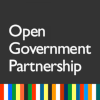Community Microsurvey Introduction in 10 Communities (AM0021)
Overview
At-a-Glance
Action Plan: Armenia, Second Action Plan, 2014-16
Action Plan Cycle: 2014
Status:
Institutions
Lead Institution: Marzeptarans (Regional administrations) , RA communities (upon consent)
Support Institution(s): Ministry of Territorial Administration of the RA UNDP (upon consent)
Policy Areas
Local Commitments, Public ParticipationIRM Review
IRM Report: Armenia End-of-Term Report 2014-2016, Armenia IRM Progress Report for 2014-2015
Early Results: Marginal
Design i
Verifiable: Yes
Relevant to OGP Values: Yes
Ambition (see definition): Low
Implementation i
Description
Community micro surveys are an affordable and unique tool that will strengthen communication between the community and local self-governance bodies and will ensure the transparency in the decision-making process.
IRM End of Term Status Summary
6. Community Micro-Surveys
Commitment Text:
Through short messages community residents get involved in local government decision-making process. Via short messages (SMS) community residents receive one or several questions about the community problems with variants of possible answers. Within 24 hours, residents are responding to inquiry by sending an SMS stating their preferred option.
Community micro- surveys are an affordable and unique tool that will strengthen communication between the community and local self-governance bodies and will ensure the transparency in the decision-making process.
Responsible Institution: Ministry of Territorial Administration of the Republic of Armenia
Supporting Institution(s): Marz (Regional) Administrations, Communities (upon agreement)
Start Date: February 2015 .. End Date: December 2016
Commitment Aim
Community micro-surveys were meant to strengthen communication between the community and local self-governing authorities, and to ensure transparency of locally made decisions.
Status
Midterm: Limited
At the time of writing of the midterm report, micro-surveys addressing issues deemed important for specific communities by their respective leaders, had been carried out in four out of ten communities.
End of Term: Complete
United Nations Development Programme (UNDP) continues to promote Community Micro-Survey Project in different communities in Armenia On 28 April, 2016, the UNDP Project Coordinator Natalya Harutyunyan presented the Community Micro-Survey Project in Shinuhayr community in Syunik Marz. Information available at http://bit.ly/2tf7hPn. . By the end of the action plan cycle, community micro-surveys had been carried out in nine communities Nine communities are: Ashtarak community in Aragatsotn marz, Goris community in Syunik marz, Gyumri and Aregnadem communities in Shirak marz; Eghvard, Byureghavan, Khasakh, Jrvezh and Arzakan communities in Kotayk marz. , some within the framework of UNDP project. In some cases, survey results were available at SMS polling program’s website Community micro-survey results are available in Armenian at http://smspolling.org/ ,and in others they were available at community websites. According to UNDP, local self-governing bodies also used other means of communication (such as local media and boards) to make the community members aware of micro-survey results.
Did it Open Government?
Civic Participation: Marginal
Upon investigating the impact of micro-surveys, UNDP concluded that local self-governing authorities took the results of micro-surveys into account during decision making. The micro-surveytool is currently installed in three cluster communities that cover 17 settlements (towns and villages). It will allow residents to participate in the polls related to consolidated communities as well as small-scale issues related to villages/towns.
A CSO representative was not assigned for monitoring implementation of this commitment. It is difficult to ascertain the extent to which micro-surveys contributed in creating a meaningful channel for local community participation in decision-making process of local self-governing bodies. CSOs are not aware of government goals and intentions in this area upon completing the pilot project.
Carried Forward?
The commitment is not included in the third action plan.
